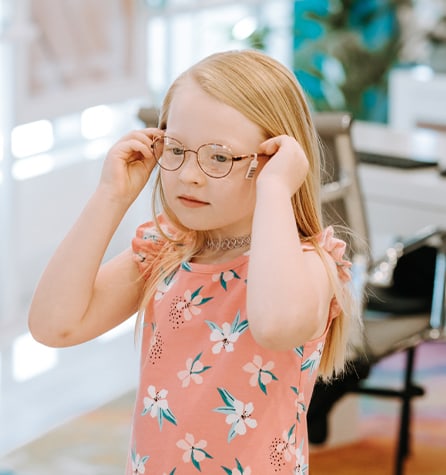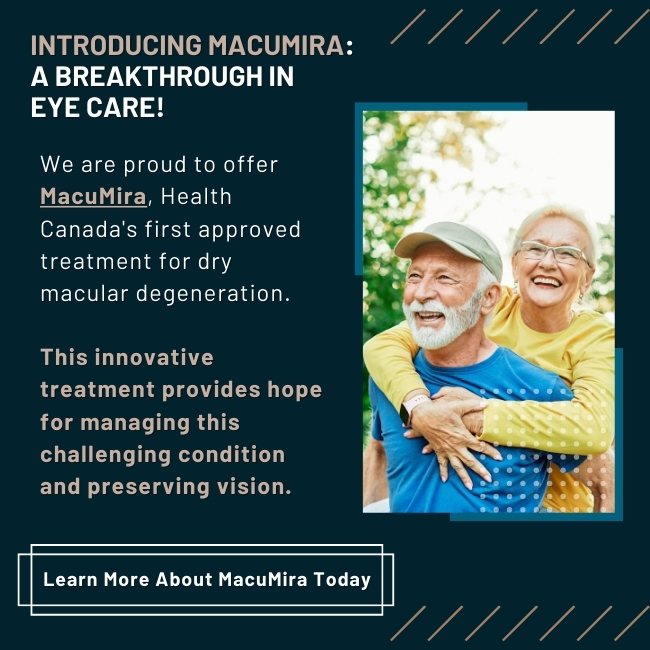When I was in Grade 6, my teacher told my parents that I might need glasses. I thought everyone was crazy and I could see just fine. I still remember putting on my first pair of glasses, and walking outside and just being amazed at what I could see. I thought everyone in the world saw green blobs when they looked at trees, but with my glasses on I could see the leaves on the trees. It was definitely a life changing experience. Everytime after that, I would go and see my optometrist, and my prescription would change, and I would keep getting stronger glasses, and stronger glasses.
Fast forward to 2023, a lot of research has been done and there are now ways that we can try and slow down how quickly a person’s prescription is changing!
Myopia, or nearsightedness, is a vision condition where near objects are clear and everything in the distance is blurry.
Why do we care about myopia?
Compared to previous generations, myopia is occurring at younger ages and progressing at a faster rate than seen before. The higher the amount of myopia a person has, the longer the eye tends to be, and the more stretched and thinned the retina can be. High myopia increases the risk of certain eye diseases, including: cataracts, glaucoma, retinal detachments, and myopic degeneration. We can measure the axial length or length of the eyeball with a machine in the office. This allows the doctor to better follow how the eye is growing as the prescription changes.
In 2010, 27% of the world’s population was myopic, and 2.8% had high myopia. It is estimated by 2050, 52% of the world’s population will be myopic, and 10% of them will have high myopia. The higher the amount of myopia that is seen, the more at risk the patient is at having myopia related eye disease.
How do we slow down myopia progression?
Myopia control refers to slowing down the rate of myopic progression with the use of lifestyle changes, eye drops, specialized glasses, and/or contact lenses in children.
There are five main strategies used to slow down myopia progression:
1. Atropine eye drops – Atropine is an eye drop that can be used to dilate the pupils and stop the eye’s focusing system. For myopia control we use it in really low concentrations to slow myopia progression. One drop is put in each eye every night. Studies show that it can reduce the amount of myopia progression by up to 60%. The exact reason this drop works is unclear, but it is thought that the drop stops the eye from thinning and stretching as much.
2. Glasses – At Kennedy Eye Clinic, we use Hoya’s Miyosmart lenses to slow myopia progression. Studies show that it also slows myopia progression by up to 60%.
In standard glasses lenses, the central light rays focus right on the retina, but the peripheral light rays focus behind the retina, because the eye is curved. This defocus at the edges is thought to signal the eye to grow, increasing the length of the eye, and increasing the glasses prescription.
Miyosmart lenses use D.I.M.S. technology (defocus incorporated multiple segments) to bring some of the peripheral light rays up to where the retina is, removing the signal for the eye to keep growing. The glasses need to be worn full time to work, but there is no fighting to put eye drops in with this option.
3. Soft Contact Lenses – If the patient does not have a lot of astigmatism, Ability daily disposable contact lenses by Johnson & Johnson are another great option. The lenses use a similar technology to the Miyosmart lenses by having a ring of defocus built into the contact lens to remove the signal for the eye to grow. The lenses need to be worn 10 hours a day, 5 days a week, to benefit from the technology.
4. Orthokeratology (Ortho-K) Contact Lenses – Orthokeratology lenses are hard contact lenses that are slept in overnight and removed from the eye in the morning. The lenses work similar to a retainer by gently reshaping the cornea overnight. When the patient wakes up, the lenses are removed and they can enjoy clear vision all day without the help of glasses or contact lenses. The lenses need to be worn each night to maintain their effect.
5. Lifestyle Changes – Studies show that increased time outdoors decreases the chance of your child being myopic in the first place. 60 to 90 minutes of outdoor play is recommended daily. However, once your child becomes myopic, time outdoors does not stop progression.
Limiting screen time can also help slow down myopia progression.
These treatment options can either be used on their own or in combination. If your child is myopic and you are wondering what the best option for them is, book an appointment with one of our optometrists to create a personalized treatment plan!
-Dr. Anna Matiko



